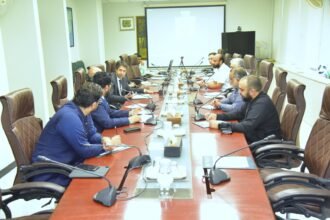Atif Zahoor Arsh
The Middle East has long been a region of profound historical significance, rich natural resources, and complex geopolitical relationships. Its influence reaches far beyond its borders, and Pakistan, sharing deep historical, cultural, and religious ties with many Middle Eastern countries, is deeply affected by developments in the region. This article explores the critical dynamics of the Middle East, highlights a brief historical context, and assesses its impact on Pakistan’s economic, political, and social spheres.
A Brief History of the Middle Eastern Dynamics
The modern political landscape of the Middle East was largely shaped by the collapse of the Ottoman Empire after World War I and the subsequent partitioning of territories under Western powers. The discovery of vast oil reserves in the early 20th century cemented the region’s global economic importance. Saudi Arabia, Iraq, Kuwait, and Iran, among others, became pivotal energy suppliers, with oil becoming a critical component of Middle Eastern economies. In the latter half of the 20th century, several events heightened regional instability. The Arab-Israeli conflict, the Iranian Revolution of 1979, and subsequent wars in Iraq and Syria introduced both sectarian divides and territorial disputes. The Arab Spring uprisings of 2011 further intensified political tensions and, in many cases, led to internal conflicts that reshaped regional alliances and power structures.
Key Geopolitical Dynamics in the Middle East
Energy Dependency and Economic Shifts: The Middle East holds approximately 48% of the world’s proven oil reserves and 40% of its natural gas reserves. These resources have long driven its economic and political importance. However, with global shifts toward renewable energy and economic diversification, especially in countries like Saudi Arabia (through its Vision 2030 program), there is a push to reduce dependency on fossil fuels. The economic future of the region is now increasingly intertwined with technology, tourism, and finance. Religious and Sectarian Divisions The rivalry between Saudi Arabia and Iran epitomizes the Sunni-Shia divide that influences conflicts in Yemen, Syria, and Iraq. These sectarian tensions also drive alliances within the Middle East, often putting countries like Qatar and the UAE on different sides of the political spectrum. The region’s conflicts often spill over, impacting Muslim-majority countries like Pakistan, which navigates a delicate balance to maintain neutrality.
Israel-Palestine Conflict: Since the establishment of Israel in 1948, the Israel-Palestine conflict remains one of the most contentious issues in the Middle East. Its ripple effects reach countries like Pakistan, which has historically supported Palestine and does not recognize Israel. However, with recent developments like the Abraham Accords, some Arab nations have normalized relations with Israel, further complicating Pakistan’s stance. Shifting Alliances and Emerging Power Blocs The recent normalization of relations between several Arab states and Israel under the Abraham Accords reflects a significant shift in regional alliances. Meanwhile, Turkey and Iran have pursued more independent foreign policies, seeking influence in Iraq, Syria, and other parts of the Middle East. Pakistan, which shares borders with Iran and has strategic interests in Afghanistan, closely monitors these shifting alliances.
The Middle East’s Impact on Pakistan
Economic Dependence on Remittances: Approximately 60% of Pakistani overseas workers reside in Gulf Cooperation Council (GCC) countries like Saudi Arabia and the UAE. In 2023, remittances from these countries to Pakistan totaled around $12 billion—an essential support for Pakistan’s economy. Changes in labor policies or economic conditions in the Middle East significantly impact Pakistani households reliant on these remittances.
Energy Security: Pakistan imports over 80% of its oil from Middle Eastern countries, making it heavily reliant on the region for energy security. Fluctuations in oil prices or supply disruptions due to Middle Eastern conflicts directly impact Pakistan’s economy, contributing to inflation and economic instability. Pakistan has recently explored long-term energy partnerships with Qatar and Saudi Arabia to secure more stable supply channels.
Religious and Cultural Ties: Pakistan has deep religious affiliations with Middle Eastern countries, particularly Saudi Arabia, which houses Islam’s holiest sites. This connection has led to political alignments, especially in matters concerning the Muslim world. Pakistan often supports Saudi Arabia diplomatically, such as in the Yemen conflict, though it has also maintained a degree of neutrality to avoid alienating Iran.
Diplomatic Challenges in a Divided Region: Navigating Middle Eastern politics poses challenges for Pakistan, especially as it tries to balance relations with both Saudi Arabia and Iran. Pakistan’s neutral stance on many Middle Eastern conflicts is a testament to its effort to maintain diplomatic ties across the spectrum. This balance is crucial given Pakistan’s reliance on economic support from Saudi Arabia and cultural and historical connections with Iran.
Security Concerns: The ongoing conflicts in the Middle East have led to heightened security risks, as extremist groups from the region, including ISIS and Al-Qaeda, have attempted to establish influence in Pakistan. Pakistan has had to strengthen its counter-terrorism measures in response, working closely with Middle Eastern nations to mitigate these threats.
Conclusion
In a nutshell, the Middle Eastern region remains one of the most geopolitically complex areas in the world, and its dynamics have profound implications for Pakistan. From economic ties and labor migration to shared religious connections and energy dependency, Pakistan’s stability and growth are closely intertwined with Middle Eastern developments. Moving forward, Pakistan’s foreign policy must adapt to the changing geopolitical landscape, balancing relationships across a region marked by both cooperation and conflict. A nuanced understanding of these dynamics and a careful balancing act in foreign relations will be crucial for Pakistan as it navigates its future in a world where Middle Eastern politics continue to play a pivotal role.
The Author is a freelance writer content and foreign policy analyst with a strong academic background in English Literature, Political Science, and History. His expertise lies in analyzing the complex dynamics of the Middle East and its global implications. With a keen eye for detail and in-depth research, Atif provides insightful commentary on international relations, geopolitics, and regional affairs.










